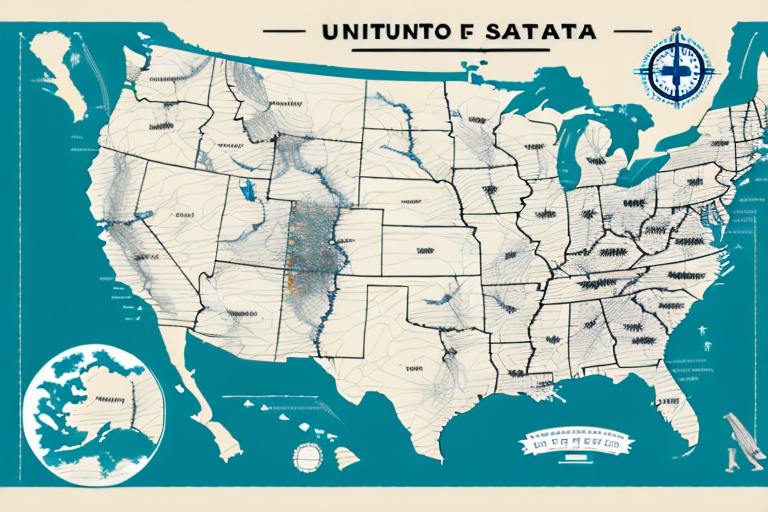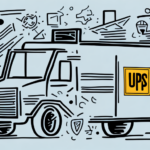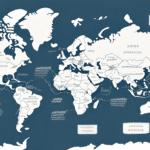Understanding USPS Shipping Zones: A Comprehensive Guide for Online Businesses
If you're a business owner selling products online, utilizing the United States Postal Service (USPS) for shipping can be a cost-effective strategy to deliver your goods to customers efficiently. A fundamental aspect of USPS shipping is comprehending the shipping zones, which are directly related to the distance between the shipping origin and the delivery destination. In this guide, we'll delve into how USPS shipping zones operate, how to identify your shipping zone, calculate shipping costs based on these zones, and explore strategies to optimize your shipping process.
What are USPS Shipping Zones and How Do They Work?
USPS shipping zones are geographical areas that the USPS uses to determine the distance between the shipping origin and the delivery destination. These zones range from 1 to 9, with zone 1 being the closest to the shipping origin and zone 9 the farthest. The shipping cost for each package is influenced by the zone it is being sent to, in addition to its weight and size.
It's important to note that USPS shipping zones are dynamic and can vary depending on both the origin and destination of the shipment. For instance, a package shipped from New York to California might fall under zone 8, whereas the same package shipped from Florida to California could be in zone 7 due to the differing distances. This zone adjustment ensures that shipping costs accurately reflect the actual distance traveled.
According to the USPS Publication 28, understanding these zones is crucial for selecting the most economical and efficient shipping options.
The Benefits of Shipping with USPS
Shipping with USPS offers numerous advantages for online businesses:
- Affordable Pricing: USPS provides competitive rates, especially for lightweight packages.
- Flexible Package Sizes: A variety of shipping options accommodate different package dimensions.
- Reliable Services: Services like Priority Mail and First-Class Mail ensure timely delivery.
- Convenient Pickup Options: Schedule free package pickups from your home or office.
- Comprehensive Tracking: Monitor your shipments with USPS's tracking system for enhanced customer transparency.
These benefits make USPS a popular choice among small to medium-sized e-commerce businesses looking to balance cost and reliability.
How to Determine Your Shipping Zone
Determining your shipping zone is an essential step in calculating shipping costs and selecting appropriate mailing options. Here's how to identify your shipping zone:
- Identify Origin and Destination ZIP Codes: Start by knowing the ZIP codes of both the shipping origin and the destination.
- Use the USPS Shipping Zone Calculator: Visit the USPS Zone Chart to find the corresponding zone based on your ZIP codes.
- Consider Zone Variations: Remember that zones may vary based on the specific locations of the origin and destination cities.
Once the shipping zone is determined, you can select the most suitable shipping method that aligns with your budget and delivery timeline.
The Difference Between Residential and Commercial Zones
USPS differentiates between residential and commercial zones, which impacts shipping rates and delivery services:
- Commercial Zones: These include businesses, offices, and warehouses. Shipping rates for commercial zones may be higher due to the larger volume of packages and the need for specialized delivery services.
- Residential Zones: These pertain to home deliveries. Shipping rates for residential zones are often lower as they typically involve smaller packages and standard delivery services.
It's crucial to verify the zone type for each delivery address to ensure accurate pricing and service selection.
How to Calculate Shipping Costs Based on Zones
Calculating shipping costs involves multiple factors, including the shipping zone, package weight, and dimensions. Here's a step-by-step approach:
- Determine the Shipping Zone: Use the USPS Zone Calculator to identify the zone based on origin and destination ZIP codes.
- Assess Package Weight and Size: Weigh your package and measure its dimensions to determine the appropriate USPS service.
- Use the USPS Shipping Calculator: Access the USPS Postage Calculator to obtain an estimated shipping cost based on the gathered information.
- Compare with Other Carriers: While USPS is often cost-effective, comparing rates with carriers like UPS or FedEx can help ensure you're getting the best deal.
Keep in mind that international shipments, package contents, and additional services (like insurance) can further influence shipping costs.
Tips for Reducing Shipping Costs within Your Zone
Managing and reducing shipping costs is vital for maintaining profitability. Here are effective strategies:
- Optimize Packaging: Use appropriately sized packaging to minimize weight and dimensional weight, which can lower shipping costs.
- Leverage Flat-Rate Shipping: Utilize USPS flat-rate options for heavier packages, which can be more economical for specific weight thresholds.
- Compare Carrier Rates: Regularly compare shipping rates across different carriers to ensure you're selecting the most cost-effective option.
- Negotiate Bulk Shipping Discounts: If you have high shipment volumes, negotiate rates with carriers for potential discounts.
Implementing these strategies can lead to significant savings and more efficient shipping operations.
The Impact of Distance on Delivery Times
The distance between the shipping origin and the destination plays a pivotal role in determining delivery times:
- Shorter Distances: Typically result in faster delivery times, often within 1-3 business days for services like Priority Mail.
- Longer Distances: May experience longer delivery windows, ranging from 4-9 business days depending on the zone.
Apart from distance, factors such as weather conditions, transportation disruptions, and seasonal package volumes (e.g., holiday seasons) can also affect delivery times.
The Role of Package Weight and Size in Zone Classification
Package weight and dimensions are critical factors in USPS zone classification and shipping costs:
- Weight: Heavier packages generally incur higher shipping costs and may be assigned to higher zones.
- Size: Larger packages increase dimensional weight, which USPS uses to calculate shipping costs if it exceeds the actual weight.
- Shape: Irregularly shaped packages might attract additional handling fees or be classified into different zones.
To optimize shipping costs, businesses should focus on minimizing package weight and utilizing appropriately sized packaging materials.
Common Misconceptions About USPS Shipping Zones
Several misconceptions can lead to misunderstandings about USPS shipping zones:
- Zone Applicability: Some believe that shipping zones only apply to Priority Mail. In reality, all USPS shipping services, including First-Class Mail and Media Mail, are subject to zone-based pricing.
- Determination Solely by Distance: While distance is a primary factor, USPS also considers regional transportation infrastructure and logistics, meaning two locations the same distance from the origin can be in different zones.
Understanding these misconceptions can help businesses make more informed shipping decisions.
Case Study: Successful Use of USPS Shipping Zones by a Small Business
Consider Acme Handmade Crafts, a small e-commerce store specializing in artisanal products. By leveraging the USPS shipping zone system, Acme was able to:
- Implement Flat-Rate Shipping: For heavier items, Acme utilized USPS flat-rate boxes, reducing costs and simplifying pricing for customers.
- Utilize Online Shipping Tools: By printing shipping labels and scheduling pickups online, Acme streamlined their shipping process, saving time and reducing manual errors.
- Enhance Customer Transparency: Using USPS's tracking system, Acme provided real-time shipment status to customers, boosting trust and satisfaction.
As a result, Acme saw a 20% reduction in shipping costs and an increase in customer retention rates.
Future Trends in USPS Shipping Zones and Their Impact on E-commerce
As e-commerce continues to evolve, USPS is expected to adapt its shipping zone system to meet changing business needs:
- Advanced Technology Integration: The adoption of artificial intelligence and machine learning algorithms may enable more accurate and personalized shipping rate calculations.
- Enhanced Tracking Features: Improved tracking systems could provide more detailed shipment information, enhancing customer experience.
- Sustainability Initiatives: USPS might introduce eco-friendly shipping options, appealing to environmentally conscious consumers and businesses.
Staying abreast of these trends can help e-commerce businesses anticipate changes and adjust their shipping strategies accordingly.
Strategies for Optimizing Your Shipping Process Using Zone Information
Effectively utilizing shipping zone information can lead to significant improvements in your shipping process:
- Regional Carrier Partnerships: Partner with regional carriers that offer competitive rates within specific zones, potentially reducing overall shipping costs.
- Zone-Based Pricing Models: Implementing pricing strategies that account for different shipping zones can ensure accurate cost coverage and maintain profit margins.
- Automated Shipping Software: Invest in software that automatically calculates the optimal shipping method and carrier based on zone information.
These strategies not only optimize costs but also enhance operational efficiency and customer satisfaction.
The Importance of Accurate Addressing in Determining Your Zone
Accurate addressing is crucial for correctly determining shipping zones and ensuring timely deliveries:
- Avoiding Misclassification: Incorrect or incomplete addresses can result in packages being sent to the wrong zone, leading to increased costs and delayed deliveries.
- Ensuring Timely Delivery: Precise addresses help delivery personnel locate destinations efficiently, reducing the likelihood of lost or delayed packages.
- Enhancing Security: Correct addressing minimizes the risk of packages being delivered to unintended recipients, protecting both the sender and the recipient.
To maintain address accuracy, businesses should implement address verification tools and encourage customers to provide complete and correct shipping information.
Best Practices for Tracking Packages Across Different Zones
Effective package tracking is essential for managing shipments across various USPS zones. Here are some best practices:
- Assign Unique Tracking Numbers: Ensure each package has a distinct tracking number for precise monitoring.
- Utilize USPS Tracking Tools: Leverage the USPS online tracking system to monitor shipment progress in real-time.
- Implement Mobile Tracking Solutions: Use USPS's mobile app to track packages on-the-go and receive push notifications for updates.
- Communicate with Customers: Provide customers with tracking numbers and direct links to tracking information to enhance transparency and trust.
By adhering to these practices, businesses can ensure efficient shipment management and elevate customer satisfaction.
Conclusion
Understanding and effectively utilizing USPS shipping zones is integral for any online business engaged in regular package shipments. By accurately determining shipping zones, optimizing packaging, and implementing strategic shipping practices, businesses can significantly reduce costs, improve delivery times, and enhance overall operational efficiency. Staying informed about current USPS policies and emerging trends will further empower businesses to adapt and thrive in the competitive e-commerce landscape.






















